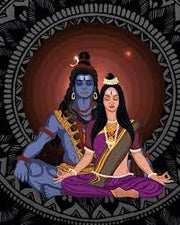Introduction:
South Anang Trayodashi Vrat, also known as Ananga Trayodashi, is a significant fasting observance celebrated by devotees in parts of South India, particularly in Tamil Nadu and Andhra Pradesh. This vrat, or fasting ritual, is dedicated to Lord Shiva and Goddess Parvati, seeking their blessings for marital bliss, harmony, and prosperity. In this blog post, we delve into the origins, significance, and rituals associated with South Anang Trayodashi Vrat.
Origins and Significance:
The origins of South Anang Trayodashi Vrat are deeply rooted in Hindu mythology. It is believed that the vrat was first observed by Goddess Parvati herself to attain the love and companionship of Lord Shiva. Legend has it that Goddess Parvati performed rigorous penance and observed this vrat on the thirteenth day (Trayodashi) of the Hindu lunar month of Phalguna (typically falling in February or March). Impressed by her devotion and dedication, Lord Shiva granted her wish, and they were reunited in eternal bliss.
The significance of South Anang Trayodashi Vrat lies in its emphasis on marital harmony and bliss. It is widely observed by married couples and those seeking life partners to invoke the blessings of Lord Shiva and Goddess Parvati for a happy and prosperous married life. The vrat is also believed to remove obstacles and challenges faced in relationships, fostering love, understanding, and mutual respect between spouses.
Rituals and Observance:
The observance of South Anang Trayodashi Vrat involves a series of rituals and customs performed with utmost devotion and sincerity. Here's a brief overview of the typical rituals associated with this auspicious vrat:
1. Fasting: Devotees observe a strict fast throughout the day, abstaining from food and water from sunrise to sunset. Some may choose to consume fruits or light snacks during specific intervals of the day.
2. Worship of Lord Shiva and Goddess Parvati: On the day of Anang Trayodashi, devotees wake up early and take a holy bath before performing puja (worship) to Lord Shiva and Goddess Parvati. They offer prayers, flowers, incense, and light diyas (oil lamps) to seek their blessings.
3. Recitation of Mantras and Stotras: Devotees chant sacred mantras and stotras dedicated to Lord Shiva and Goddess Parvati throughout the day, invoking their divine presence and seeking their grace.
4. Devotional Activities: Apart from fasting and worship, devotees engage in various devotional activities such as reading religious scriptures, listening to spiritual discourses, and performing acts of charity and kindness.
5. Breaking the Fast: The fast is traditionally broken in the evening after performing the evening prayers and rituals. Devotees partake in a simple vegetarian meal or prasad (offerings blessed by the deities) to conclude the fasting observance.
Conclusion:
South Anang Trayodashi Vrat is a sacred and revered fasting ritual celebrated with great devotion and fervor by devotees seeking the blessings of Lord Shiva and Goddess Parvati for marital harmony and bliss. Through the observance of this vrat, devotees express their deep faith and commitment to their relationships, seeking divine intervention to overcome challenges and lead a fulfilling married life. As they embark on this spiritual journey, they are reminded of the timeless bond between Lord Shiva and Goddess Parvati, inspiring them to nurture love, compassion, and understanding in their own relationships.


